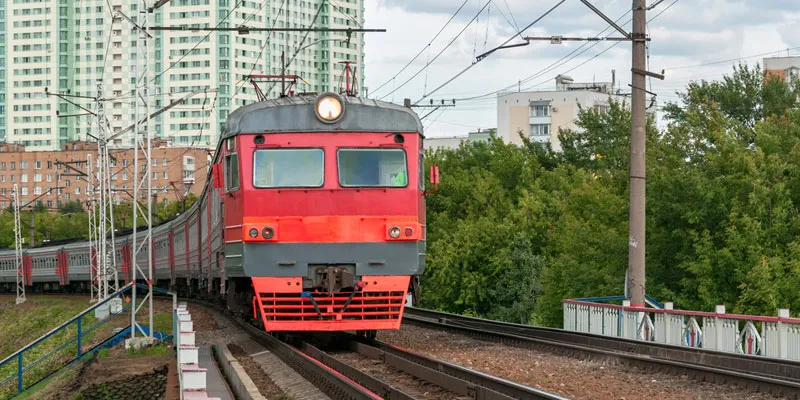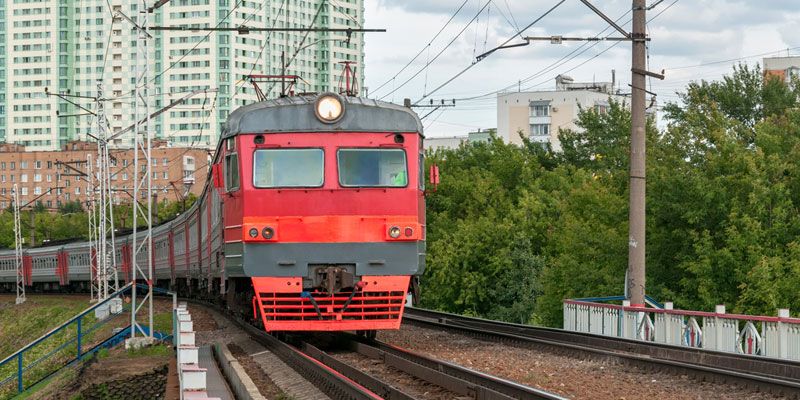India’s Flagship Venture In Efficient, Green Passenger Transportation: Lightning Railways
In this series, Sramana Mitra shares chapters from her book Vision India 2020, that outlines 45 interesting ideas for start-up companies with the potential to become billion-dollar enterprises. These articles are written as business fiction, as if we’re in 2020, reflecting back on building these businesses over the previous decade. We hope to spark ideas for building successful start-ups of your own.
Trains had snaked their way across the Indian landscape since the British established the Indian Railways in 1853. By 2008, 18 million passengers commuted by train each and every day. But train travel in India was fraught with unpredictability. The infamous story of a man arriving at Howrah station at 4:55 for the 5:00 Rajdhani Express, only to watch the train leave without him has been told far and wide. “What happened?” he asks. “Trains never leave early in India!”

“Oh,” the station agent replies, “that was yesterday’s Rajdhani.”
But as India endeavored to join the first rank of nations, this inefficient, often lazy, and unreliable system neared the end of its days.
We founded Lightning Railways to be India’s flagship venture in efficient (and green) passenger transportation. It was modeled after the Beijing–Tianjin Intercity Rail, which on August 1, 2008, linked Beijing to neighboring Tianjin at an astounding 350 kilometers per hour (217 miles per hour), covering a distance of 117 kilometers in 30 minutes. A year later, we started building the first two-track line between Mumbai and Delhi, paving the way for Lightning Railways.
Mumbai and Delhi were separated by roughly 1,165.38 kilometers (724.15 miles), but on the way, there were a number of important cities like Surat, Ahmedabad, Udaipur, Ajmer, and Jaipur, which we also wanted to connect. Mumbai to Surat was 263 kilometers; Surat to Ahmedabad another 255 kilometers; Ahmedabad to Udaipur another 252 kilometers; Udaipur to Ajmer another 274 kilometers; Ajmer to Jaipur another 131 kilometers; and finally, Jaipur to Delhi another 258 kilometers. These stops would add an extra 268 kilometers beyond a direct service, but would expand our service options to invaluable additional traffic. And the additional travel time became a moot point when put in the context of the entire journey. For during the days of the Rajdhani Express, the Mumbai-Delhi journey took nearly 18 hours, which we managed to cut to slightly over five once Lightning Railways launched in 2012.
We used the same Siemens Velaro trains as those on the Beijing-Tianjin line. The eight-car trains were similar to the Velaro E design, but 300 millimeters (11.8 inches) wider to fit a few more seats in a two-three layout. Our 200-meter (656-feet) train seated 548 passengers: 16 in deluxe class, 50 in first class, and 490 in a second class that was head and shoulders above the Indian Railways first class.
Fifteen of these trains ran along the Mumbai-Delhi segment, guaranteeing efficiency and predictability – as well as comfort. The reservation-only trains were kept extremely clean, were air-conditioned, had comfortable reclining seats, and operated out of state-of- the-art terminals separate from the long-ailing Indian Railways stations.
In 2012, we started adding track for Delhi-Kolkata, Kolkata-Mumbai, Mumbai- Hyderabad-Bangalore-Chennai, Delhi-Hyderabad, and Kolkata-Hyderabad. In each case, we followed the same philosophy of connecting important intermediate cities, adding a bit of travel time in exchange for a mass of eager customers.
By 2015, all six lines were operational, with 90 trains running up, down, and across the length and breadth of India.
Against our two main competitors, of rail and air, we lacked nothing. We competed well against air travel both on pricing and predictability, and there was simply no comparing our services with those of the Indian Railways. Their entire first-class client base, and a large chunk of business travelers in the short-haul inter-city segments, never hesitated in joining our fast-track.
Passengers waited patiently in relaxed lounges throughout India, tea in hand,
knowing without a shadow of a doubt that the train would arrive and leave at the scheduled time. Unlike their past experiences of frantic mobile phone calls rescheduling missed meetings, our passengers could place their full mental energy in preparing for the content of coming meetings, not the logistics of getting there.
As in all of our infrastructure ventures, this too was an extremely expensive project. We were overhauling one of the central structures within an enormous nation. The trains alone cost $4.2 billion. The tracks added another $50 billion. But we cut the tape on the project with the Indian government offering incentives similar to the Magic Carpet Roadways venture. Then we negotiated a very substantial subsidized loan, plus moratorium, to make the economics of the business viable.
Such infrastructure projects as Eastgate, Magic Carpet Roadways, and Lightning Railways would cease to be viable without government subsidies. But the government of India had come to terms with this by the time Manmohan Singh took his oath as a second-term prime minister. And behind the scenes, Sonia Gandhi was dreaming of a modern India, a twenty-first-century India, generating policy-level movement in the parliament and cabinet to assure its arrival. By 2014, Indian politicians had become accustomed to taking bold steps towards modernization. And by 2020, India’s model of entrepreneurship-based development was universally accepted as the central weapon of mass reconstruction.
Image credit "ShutterStock"






